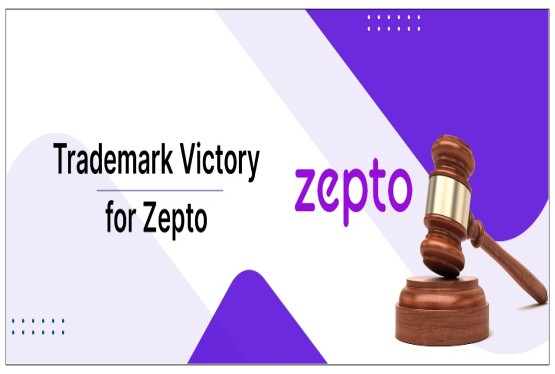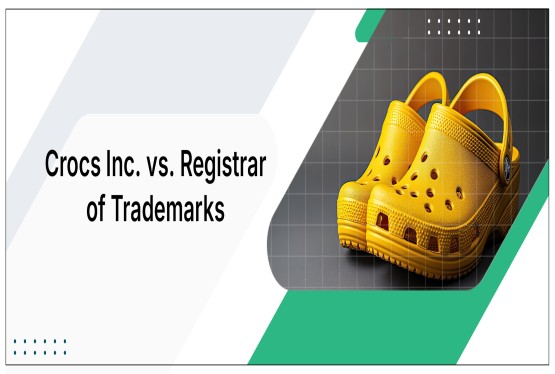Every company's reputation is based on its brand value and goodwill; they serve as its identity. A trademark enables a company to develop its own reputation in preparation for future success. Every coin, however, has two sides. Similar to this, a trademark can both assist a company in building a profitable good reputation and also be violated or utilized improperly. One method of trademark infringement or misuse is the use of a "deceptively similar" trademark.
The Importance of Trademarks
Trademarks play a vital role in establishing a company's or product's quality and brand value, attracting customers to make purchases. Trademarks are recognizable or linked with the goods to set them apart from other kinds of comparable goods. They help consumers connect specific goods with a specific business. Trademarks can take the form of a label, a graphic, or a color scheme that is used to identify a product. It gives consumers a mental image of the quality of the product, and with time, that mark may become a household name. Trademarks serve as a source-origin indicator for products.
What is Deceptive Similarity
The Trade Marks Act, 1999, defines ‘Deceptive Similarity’ under Section 2(h) as "a mark shall be deemed to be deceptively similar to another mark if it so nearly resembles that other mark as to be likely to deceive or cause confusion." A trademark, deceptively similar, is one that is virtually identical to a mark that already exists and has the potential to readily mislead and cause confusion in the eyes of consumers. Deceptively similar trademarks are ones that sound and look very similar to the original trademark, which increases the likelihood that consumers will be duped, causes financial loss, and harms the reputation of the owner of the original trademark.
Evaluating Deceptive Similarity
The Supreme Court established the criteria for evaluating "Deceptive Similarity" in Cadila Health Care Ltd v. Cadila Pharmaceutical Ltd. The following criteria must be taken into account while determining misleading similarity:
- Nature of the mark (word, label, or composite mark)
- The degree of alikeness between the marks
- Nature of the goods (services for which the trademark is used)
- The level of judgement and diligence shown by the buyer when making a purchase of products or services
- The method by which the customer made the purchase or placed the order
- The similarity between the rival dealers' commodities in terms of their nature, functionality, and personalities
Landmark Cases
Several landmark cases have helped establish the understanding and application of deceptive similarity in trademarks law. Here are a few notable examples:
Ranbaxy Laboratories Ltd. v. Dua Pharmaceuticals Pvt. Ltd.
The owner of the trademark "CALMPOSE" for a medication is the plaintiff. The plaintiff claimed that the defendant began producing a comparable medicine under the name "CALMPROSE." The court determined that the marks "CALMPOSE" and "CALMPROSE" are both used for the same class of goods, that they are phonetically and aesthetically similar, and that they are therefore deceptively similar.
M/S Allied Blenders and Distillers Pvt. Ltd. v. Govind Yadav & Anr.
Officer's Choice was a trademark owned by the plaintiff. According to the plaintiff, the defendant's trademark "Fauji" is confusingly similar to his trademark "Officer's Choice" since "Fauji" is a Hindi word that, when translated, denotes a military officer. Both the plaintiff and the defendant are involved in the alcohol industry. Furthermore, the bottle's packaging is the same. The lawsuit for trademark infringement was dismissed because the court determined that there is no confusing similarity between the trademarks "Officer's Choice" and "Fauji."
Starbucks Corporation v. Sardarbuksh Coffee and Co. & Ors.CS (COMM) 1007/2018
"STARBUCKS'' was a registered trademark owned by the plaintiff. Sardarbuksh Coffee & Co. is a business that the defendants founded. Both the plaintiff and the defendant offered the same kind of goods and services. According to the Delhi High Court, the name Sardarbuksh Company bears a phonetic and visual resemblance to the "Starbucks'' logo, making it fall under the definition of "Deceptive Similarity." As a result, the Delhi High Court mandated that Sardarbuksh change its name to "SARDAR-JI-BAKSH'' or "SARDAR-JI-BAKSH COFFEE & CO'' and modify its logo. Sardarbuksh was further instructed to mark a new trademark registration application with a new name.
Conclusion
Protecting a trademark from deceptive similarity is crucial for maintaining a company's identity and reputation. The judiciary has been diligent in handling cases of misleading likeness, recognizing the importance of preserving the rights of the legitimate trademark holder and safeguarding the interests of consumers. The concept of deceptive similarity has been extensively utilized to defend against trademark infringement and passing off. With its commitment to fairness and justice, the judiciary ensures that trademark infringement cases are handled with utmost care and check.
FREQUENTLY ASKED QUESTIONS
⇒ Can a trademark be considered deceptively similar if it only looks similar but sounds different?Yes, a trademark can be deemed deceptively similar even if it looks similar but sounds different. The determination of deceptive similarity considers various factors, including visual, phonetic, and conceptual resemblance, along with the likelihood of confusion among consumers. Therefore, similarity in appearance alone can contribute to a finding of deceptive similarity.
⇒ Are there any instances where two trademarks with similar names were found not to be deceptively similar?Yes, there have been cases where two trademarks with similar names were found not to be deceptively similar. Courts consider several factors, including the nature of goods or services, the level of consumer awareness, and the overall impression created by the marks. If these factors indicate that confusion is unlikely, the trademarks may not be deemed deceptively similar.
⇒ Can a trademark be considered deceptively similar if it targets a different consumer demographic?Yes, a trademark can still be considered deceptively similar even if it targets a different consumer demographic. The assessment of deceptive similarity focuses on the likelihood of confusion among consumers, regardless of their demographic characteristics. Therefore, if the trademarks are sufficiently similar to cause confusion among consumers in any demographic, they may be deemed deceptively similar.
⇒ Is it possible for two trademarks to be deceptively similar if they are used for completely different products or services?Yes, it is possible for two trademarks to be deemed deceptively similar even if they are used for completely different products or services. The assessment of deceptive similarity considers factors such as the nature of the marks, the similarity of the goods or services, and the likelihood of confusion among consumers. Therefore, if the marks are sufficiently similar and used in a manner likely to cause confusion, they may be considered deceptively similar.
⇒ How does the concept of deceptive similarity apply in cases involving non-traditional trademarks, such as color's or sounds?The concept of deceptive similarity can apply in cases involving non-traditional trademarks, such as colours or sounds, albeit with some differences in evaluation. In such cases, factors like visual and auditory resemblance, consumer perception, and the overall commercial context are considered to determine deceptive similarity. Courts assess whether the marks are likely to cause confusion among consumers, regardless of their non-traditional nature.






























_(b)_of_the_Trademark_Act,_1999_(1)_crop10_thumb.jpg)



_crop10_thumb.jpg)



























_crop10_thumb.jpg)
_crop10_thumb.jpg)






_crop10_thumb.jpg)








_crop10_thumb.jpg)
_crop10_thumb.jpg)



_crop10_thumb.jpg)





























_crop10_thumb.jpg)

















_crop10_thumb.jpg)






_crop10_thumb.jpg)












































































































































_crop10_thumb.jpg)




































_crop10_thumb.jpg)












_crop10_thumb.jpg)






















